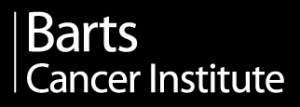Authors:
Intratumour heterogeneity holds promise as a prognostic biomarker in multiple cancer types. However, the relationship between this marker and its clinical impact is mediated by an evolutionary process that is not well understood. Here we employ a spatial computational model of tumour evolution to assess when, why and how intratumour heterogeneity can be used to forecast tumour growth rate, an important predictor of clinical progression. We identify three conditions that can lead to a positive correlation between clonal diversity and subsequent growth rate: diversity is measured early in tumour development; selective sweeps are rare; and/or tumours vary in the rate at which they acquire driver mutations. Opposite conditions typically lead to negative correlation. Our results further suggest that prognosis can be better predicted on the basis of both clonal diversity and genomic instability than either factor alone. Nevertheless, we find that, for predicting tumour growth, clonal diversity is likely to perform worse than conventional measures of tumour stage and grade. We thus offer explanations – grounded in evolutionary theory – for empirical findings in various cancers. Our work informs the search for new prognostic biomarkers and contributes to the development of predictive oncology.
https://www.biorxiv.org/content/10.1101/2019.12.17.879270v1.full. Dec 2019




